1
High Trust ProductsCharging Technology Speed Performance Benchmarking
Chargers and Power Banks
Headphone & Speakers
Cases & Covers
Virtual Reality
Cables & Adapters
Media Player
Laptop
Tablet
Desktop
Cell Phone
Printers & Copiers
Memory Cards
TV
Computer Display
Game Console
Smart Home
Wearable Technology
Photo & Video Camera
Car Electronics
Car
Networking Equipment
Smart Toys
Home Audio & Video
Professional & Industrial
Storage Drive
Docking Station
Game Console Controllers
Set-top box
Keyboard, Mice, & Stylus
Portable Music Player
Computer Parts & Components
Cordless & Speakerphones
Projector
Software
Reporting
PD52U-2UT01
by Monoprice






Interested in this product?

Select a product category to see which devices type we recommend to use with the PD52U-2UT01:

Monoprice PD52U-2UT01 39W Dual USB Wall Charger Can Be Used to Supply Power to Notebook PC's and Mobiles

The Monoprice PD52U-2UT01 39W Dual USB Wall Charger conveniently combines two USB charging outputs in a single charger which is also very affordable. The USB Type-C port can be used to rapidly charge your USB Type-C notebook PC up to 39 watts using USB Power Delivery 2.0 technology. At the same time you can also connect your phone or tablet to the other USB Type-A port for 12 watts of charging.
The Monoprice PD52U-2UT01 39W Dual USB Wall Charger is certified by USB-IF through the official Certified USB logo printed on the front of the box and on the charger itself. Despite this, the charger fails many USB compliance tests (when tested using the USB Power Delivery Compliance C2 Tester from Granite River Labs) so be extra careful when using this charger. Other similar chargers also having the same issue include the Nekteck NK-TC-PD30 51W Dual Port USB Type-C PD Wall Charger (in this review) and the Choetech PD51-1C1U 51W Dual Port USB Type-C PD Wall Charger (see this review). Note that the GRL USB Power Delivery Compliance C2 Tester was used to run just a subset of the full USB Power Delivery compliance test suite for the Monoprice PD52U-2UT01 39W Dual USB Wall Charger where we observed the same test results as the Choetech PD51-1C1U 51W Dual Port USB Type-C PD Wall Charger (see review for more details).
Note that while the Monoprice PD52U-2UT01 39W Dual USB Wall Charger supports USB Power Delivery based charging, it can also support Qualcomm Quick Charge technology to charge Qualcomm Quick Charge enabled phones (click here to see how we tested this charger with the Xiaomi Mi 5 phone).
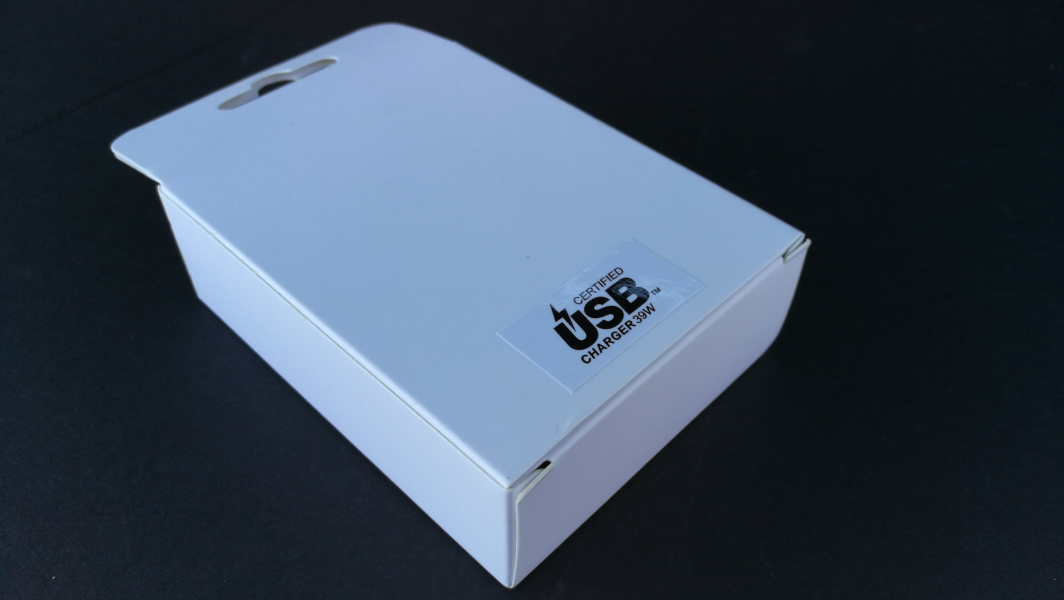
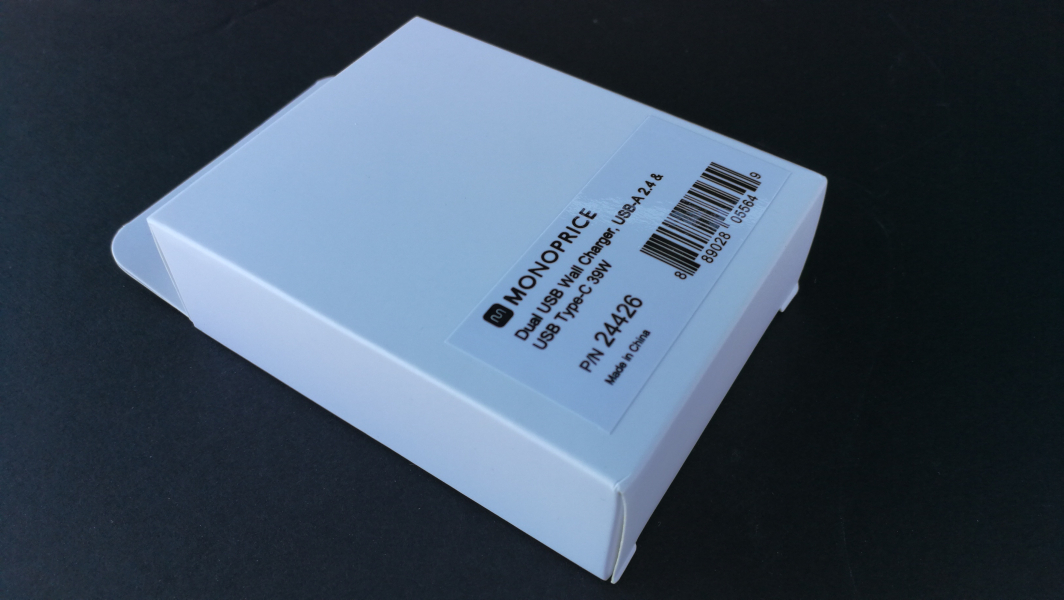
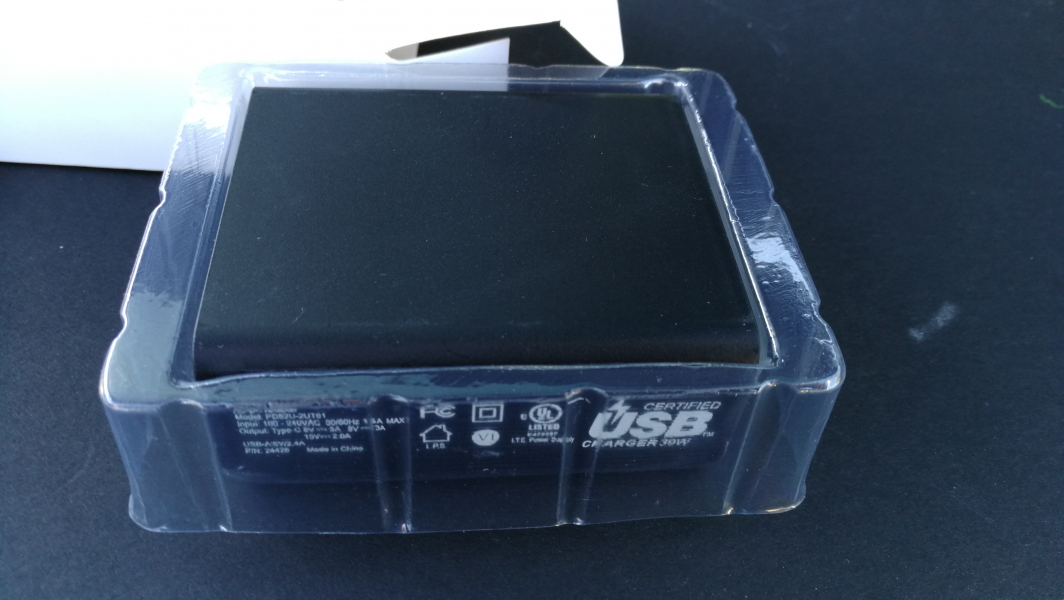
The charger comes with two standard foldable prongs to plug into a AC wall outlet for charging.
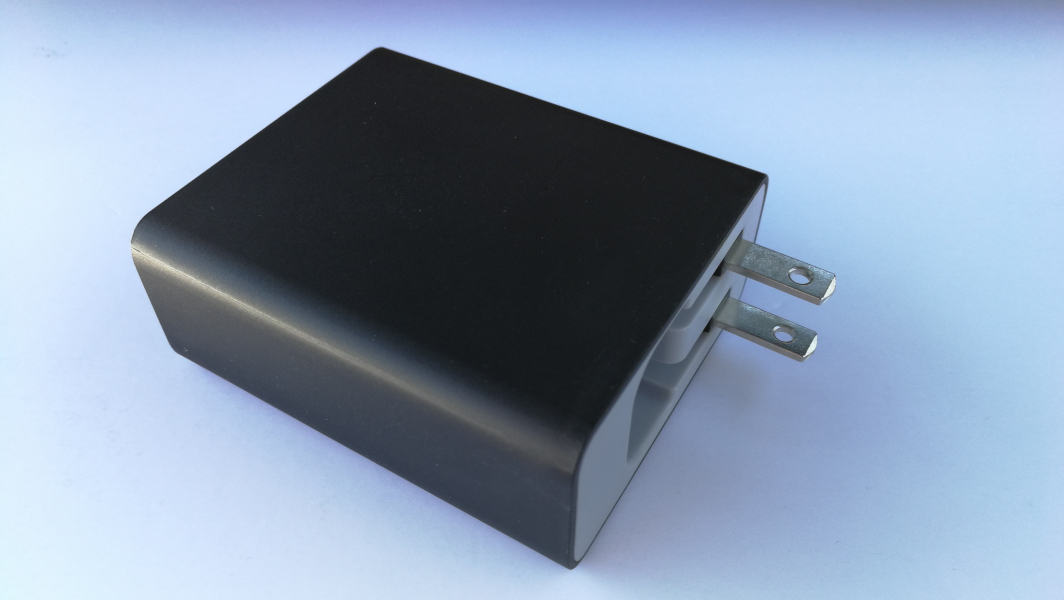
The Monoprice PD52U-2UT01 39W Dual USB Wall Charger supports 15 watts (5 volts @ 3 amps), 27 watts (9 volts @ 3 amps) and 39 watts (15 volts @ 2.6 amps) over its USB Type-C port allowing you to charge most notebook PC's in the market as well as tablets and phones. The charger also provides a USB Type-A port to supply up to 12 watts (5 volts @ 2.4 amps) of legacy charging for your phones, tablets or other USB peripherals.
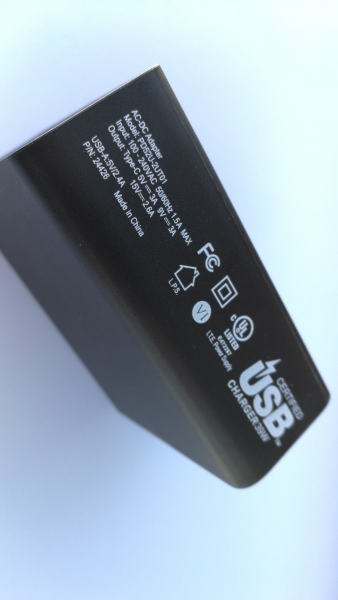
A side by side comparison clearly shows the Monoprice PD52U-2UT01 39W Dual USB Wall Charger shares a similar design with both the Nekteck NK-TC-PD30 51W Dual Port USB Type-C PD Wall Charger and the Choetech PD51-1C1U 51W Dual Port USB Type-C PD Wall Charger. Similarly the Monoprice charger also enables charging using Qualcomm Quick Charge technology over USB Type-C besides USB Power Delivery (click here to see more).


Using the USB Power Test App from Granite River Labs with the Granite River Labs USB Power Delivery Compliance C2 Tester, we generate the following test results for the Monoprice PD52U-2UT01 39W Dual USB Wall Charger. Note the charger stopped working after running through the tests.
The USB Power Test App first negotiates a power contract for every PDO supported by the Monoprice charger, and increases the load gradually to find the threshold where over current protection (OCP) kicks in and voltage and current start to drop for safety reasons.
The USB Power Test App reports out all the PDO's supported by the Monoprice charger and their OCP thresholds. OCP thresholds for the Monoprice charger are set at about 12-20% above the maximum current levels for the fixed PDO's.
| PDO | OCP (A) |
|---|---|
| PDO#1 Fixed: 5V 3A | 3.6 |
| PDO#2 Fixed: 9V 3A | 3.58 |
| PDO#3 Fixed: 12V 3A | 3.38 |
| PDO#4 Fixed: 15V 2.6A | 3.11 |
The USB Power Test App from Granite River Labs also produces an I-V curve which graphically shows the relationship between voltage and current for each PDO. For all the PDO's except for the 12V PDO we can observe current fold-back behavior where as the current increases beyond the OCP threshold, the voltage starts to curve down rather than immediately shutting off. The 12V PDO shows the voltage immediately shuts off once the current crosses over the OCP threshold.
Since the Monoprice PD52U-2UT01 39W Dual USB Wall Charger is a multi port charger, the USB Power Test App can be used to determine whether each output port of the charger is able to supply power independently. For every PDO supported by the Monoprice charger, the USB Power Test App increases the load gradually for both the USB Type-C and Type-A ports to detect any power loss at the highest load limit for each port.
USB Type-C Port
USB Type-A Port
The USB Power Test App reports out the voltage, current and load limits for all the PDO's supported by the Monoprice charger for each port.
| Port1 PDO | Port2 PDO | Port1 (V) | Port1 (A) | Port1 Loading(%) | Port2 (V) | Port2 (A) | Port2 Loading(%) |
|---|---|---|---|---|---|---|---|
| PDO#1 Fixed: 5V 1.5A | 4.91 | 1.49 | 100% (7.3W) | ||||
| PDO#1 Fixed: 5V 1.5A | PDO#1 Fixed: 5V 3A | 4.91 | 1.49 | 100.49% | 4.83 | 2.96 | |
| PDO#1 Fixed: 5V 1.5A | PDO#2 Fixed: 9V 3A | 4.9 | 1.49 | 100.11% | 8.77 | 2.97 | |
| PDO#1 Fixed: 5V 1.5A | PDO#3 Fixed: 12V 3A | 4.9 | 1.49 | 100.11% | 11.7 | 2.97 | |
| PDO#1 Fixed: 5V 1.5A | PDO#4 Fixed: 15V 2.6A | 4.91 | 1.49 | 100.24% | 14.7 | 2.59 | |
| PDO#1 Fixed: 5V 3A | 4.83 | 2.96 | 100% (14.3W) | ||||
| PDO#1 Fixed: 5V 1.5A | PDO#1 Fixed: 5V 3A | 4.91 | 1.49 | 4.83 | 2.96 | 100% | |
| PDO#2 Fixed: 9V 3A | 8.77 | 2.97 | 100% (26.1W) | ||||
| PDO#1 Fixed: 5V 1.5A | PDO#2 Fixed: 9V 3A | 4.9 | 1.49 | 8.77 | 2.97 | 100% | |
| PDO#3 Fixed: 12V 3A | 11.7 | 2.98 | 100% (34.9W) | ||||
| PDO#1 Fixed: 5V 1.5A | PDO#3 Fixed: 12V 3A | 4.9 | 1.49 | 11.7 | 2.97 | 99.76% | |
| PDO#4 Fixed: 15V 2.6A | 14.7 | 2.58 | 100% (38W) | ||||
| PDO#1 Fixed: 5V 1.5A | PDO#4 Fixed: 15V 2.6A | 4.91 | 1.49 | 14.7 | 2.59 | 100.18% |
The USB Power Test App can also use the Granite River Labs USB Power Delivery Compliance C2 Tester integrated with the GW Instek APS-7100 programmable AC power supply to compare the charger's power output vs power input so that power efficiency can be measured and compared to regulatory limits from United States of Energy (DOE) Level VI or European Union's CoC Tier 2 requirements. We can repeat the power efficiency tests for different PDO's, current load conditions, and different AC input ranges, allowing us to get a complete picture of power efficiency ranges across all different usage scenarios.
View Full Article
USB PD Charging Technologies & Battery Life Benchmarking
Featured Products
 GTrusted
GTrusted

































